

Josh Nevett
2025 Kia Tasman review
27 Days Ago
The updated Mazda BT-50 GT presents well inside and out, but is there enough substance to match the style?
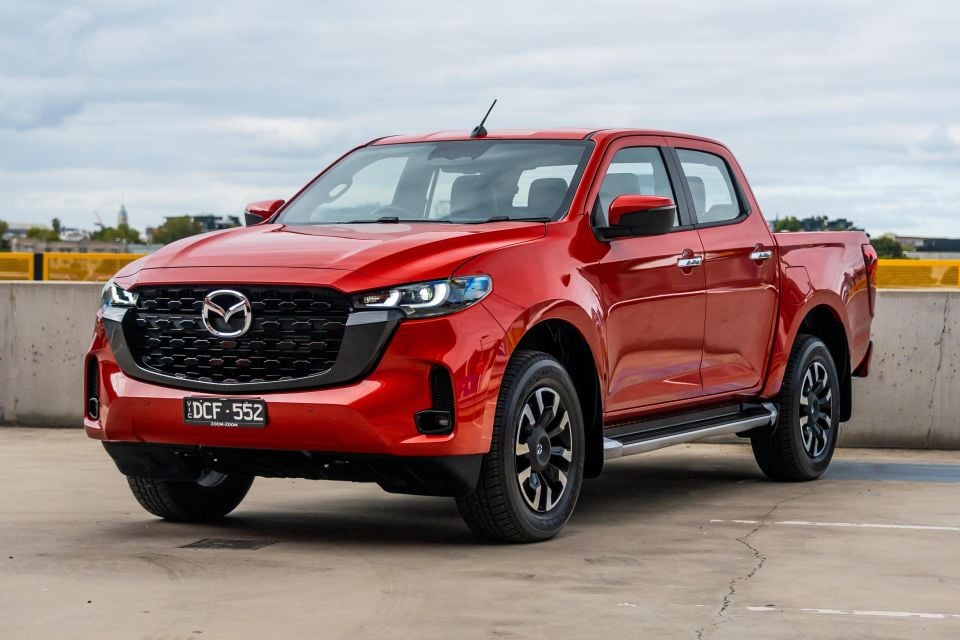
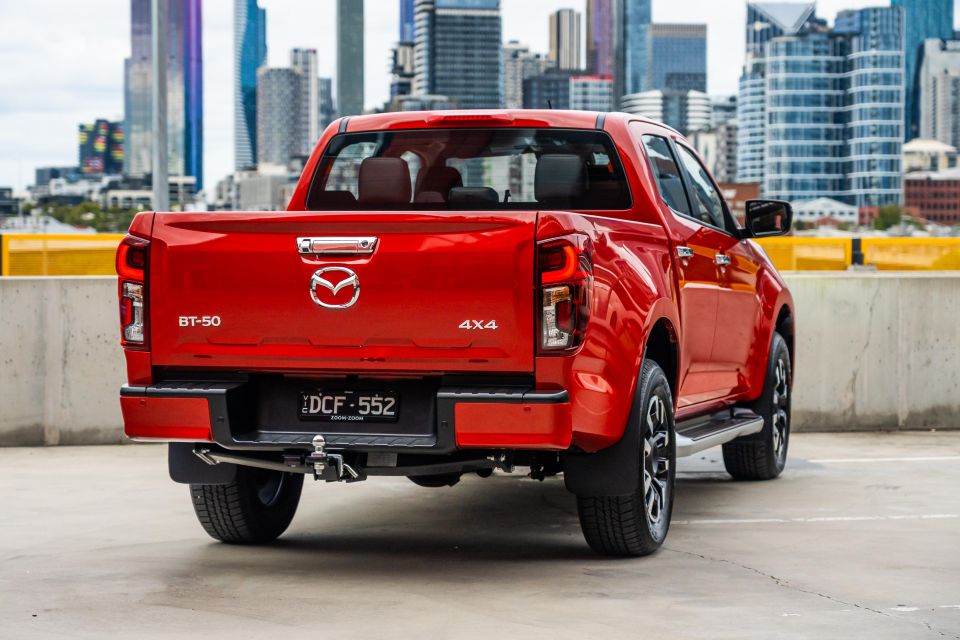

Quickly see how this car stacks up against its competition. Select any benchmark to see more details.
Where expert car reviews meet expert car buying – CarExpert gives you trusted advice, personalised service and real savings on your next new car.
The Mazda BT-50received a promising mid-life facelift earlier this year, but you wouldn’t know that by looking at the sales figures.

Instead of spiking in line with improvements to the vehicle, BT-50 sales have stagnated this year, and it remains an afterthought for ute buyers compared to segment leaders like the Ford Ranger, Toyota HiLux, BYD Shark 6 and even its twin-under-the-skin, the Isuzu D-Max.
But why? Perhaps it’s because prices are up by between $550 and $3510 compared to pre-facelift versions. Well they were until Mazda recently launched drive-away deals across the model lineup. Or maybe the arrival of new players has prompted buyers to shop around.
Whatever the reason, the BT-50 still doesn’t command the same attention that Mazda’s passenger vehicles do, especially the CX-3 and CX-5 SUVs.
With that in mind, let’s briefly shine a spotlight on the BT-50 – specifically the premium-leaning GT – to see if it’s an underrated gem in one of Australia’s most competitive segments.
In total, there are now 15 BT-50 variants, down from 22. The GT sits near the top of the lineup, below only the SP flagship.
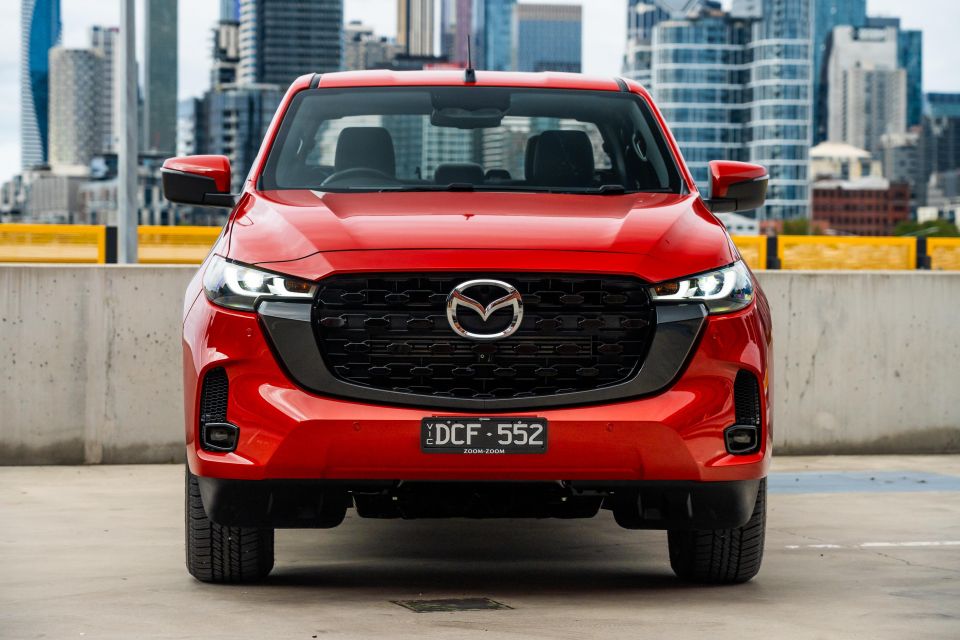
4×2
| Model | Price before on-road costs | Drive-away price |
|---|---|---|
| 2025 Mazda BT-50 XS single-cab/chassis 1.9-litre | $36,400 | $38,990 |
| 2025 Mazda BT-50 XT single-cab/chassis 3.0-litre | $39,400 | N/A |
| 2025 Mazda BT-50 XT ‘Freestyle’ cab/chassis 3.0-litre | $43,000 | N/A |
| 2025 Mazda BT-50 XT dual-cab/chassis 3.0-litre | $46,610 | N/A |
| 2025 Mazda BT-50 XT dual-cab pickup 3.0-litre | $48,210 | N/A |
| 2025 Mazda BT-50 XTR dual-cab pickup 3.0-litre | $53,790 | N/A |
4×4
| Model | Price before on-road costs | Drive-away price |
|---|---|---|
| 2025 Mazda BT-50 XT single-cab/chassis 3.0-litre | $47,250 | N/A |
| 2025 Mazda BT-50 XT ‘Freestyle’ cab/chassis 3.0-litre | $51,000 | N/A |
| 2025 Mazda BT-50 XT dual-cab/chassis 3.0-litre | $54,620 | N/A |
| 2025 Mazda BT-50 XT dual-cab pickup 3.0-litre | $56,220 | $54,990 |
| 2025 Mazda BT-50 XTR dual-cab/chassis 3.0-litre | $59,650 | N/A |
| 2025 Mazda BT-50 XTR dual-cab pickup 3.0-litre | $62,750 | $62,490 |
| 2025 Mazda BT-50 GT dual-cab/chassis 3.0-litre | $63,070 | N/A |
| 2025 Mazda BT-50 GT dual-cab pickup 3.0-litre | $66,170 | $65,990 |
| 2025 Mazda BT-50 SP dual-cab pickup 3.0-litre | $71,500 | $67,990 |
Mazda Australia is currently offering special drive-away pricing on some BT-50 variants including the GT pickup tested here. Right now you can get behind the wheel of a BT-50 GT dual-cab for $65,990 drive-away, a discount of thousands compared to regular pricing.
Alternatively, buyers of XTR, GT and SP pickups can opt to forgo a discount in favour of a standard-fit Tow Pack valued at over $1500.
To see how the Mazda BT-50 stacks up against its rivals, use our comparison tool
Cabin presentation has always been a strength of Mazda when it comes to the BT-50, and the updated model is no exception.
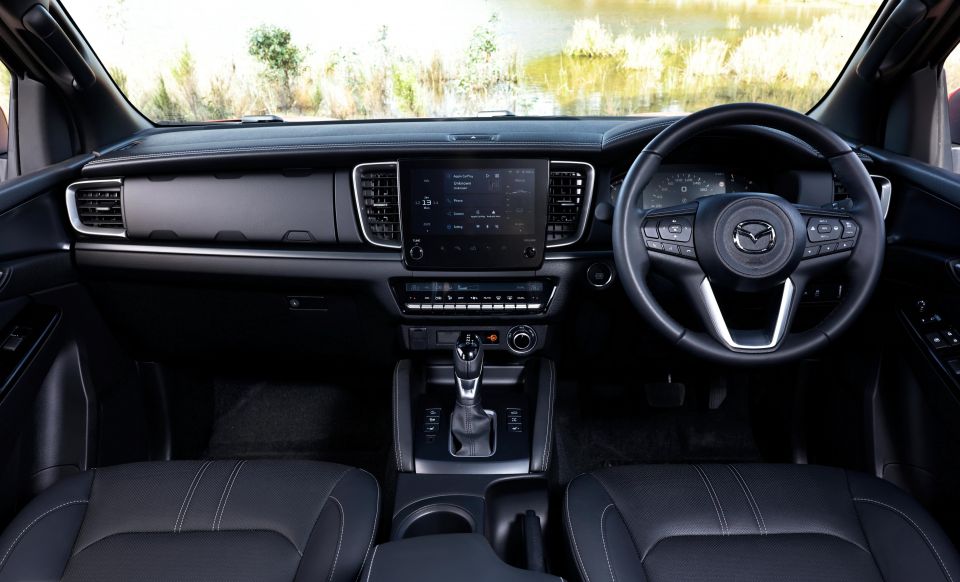
In GT guise, the seats, door cards, centre console, steering wheel and dash are all trimmed in leather, which gives the interior a real sense of quality.
Those perceptions of quality also translate to comfort, as the front seats are ergonomic and forgiving over long journeys. Two-stage heating comes standard with the GT, as does full electric adjustment with lumbar support. There’s also plenty of adjustment in the steering column, so drivers of all shapes and sizes can find their perfect driving position.
Materials aside, the BT-50 shares a lot of components with the Isuzu D-Max – a popular player in the Australian ute landscape.
That means you get the 9.0-inch infotainment system from the D-Max, at least in higher spec variants of the BT-50. While the new screen is an upgrade over the old hardware, it’s not perfect.
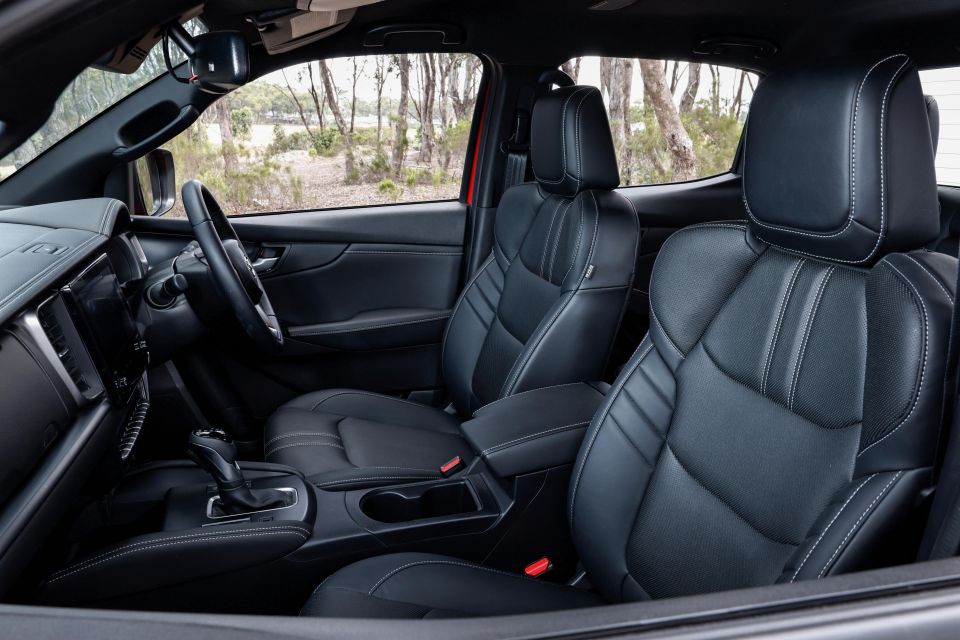
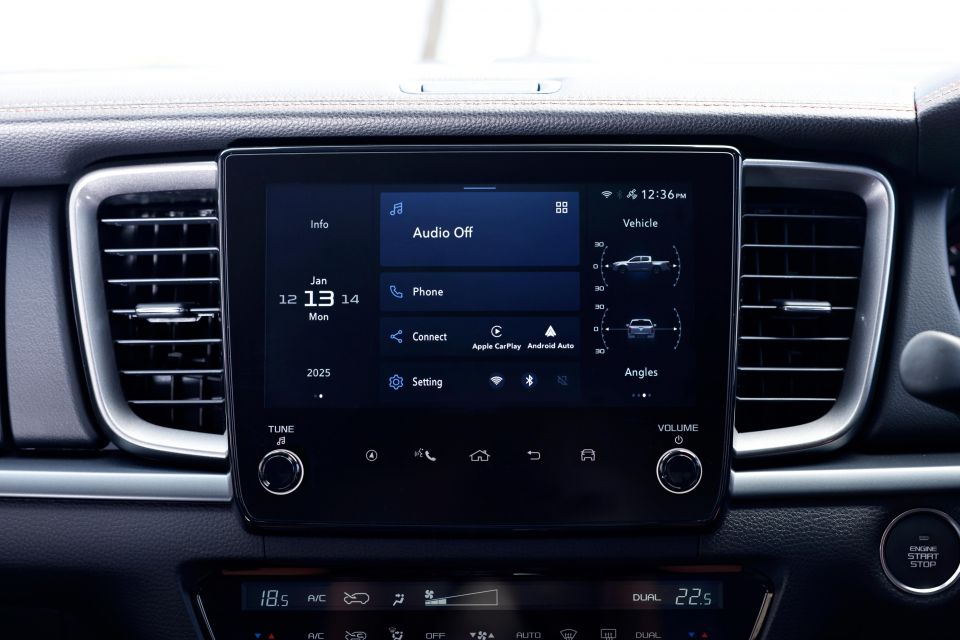
The wireless Apple CarPlay connection stopped working during our test, and the infotainment graphics still fall flat compared to rivals like the Ford Ranger and Kia Tasman.
However, the system is otherwise user-friendly. Touch buttons at the base of the unit provide quick access to popular functions, and there aren’t so many menus that the tech becomes overwhelming.
Likewise, a bare bones digital driver display sits proudly behind the steering wheel, flanked by old-school analogue gauges. There’s nothing flashy about this setup, and little in the way of configurability, but it presents all the critical information in a way that’s easy to digest.
Again though, if the latest and great tech ranks highly among your priorities, you’re probably better off with a Kia Tasman or BYD Shark 6. But it’s fair to assume that only applies to a small sub-section of ute buyers.

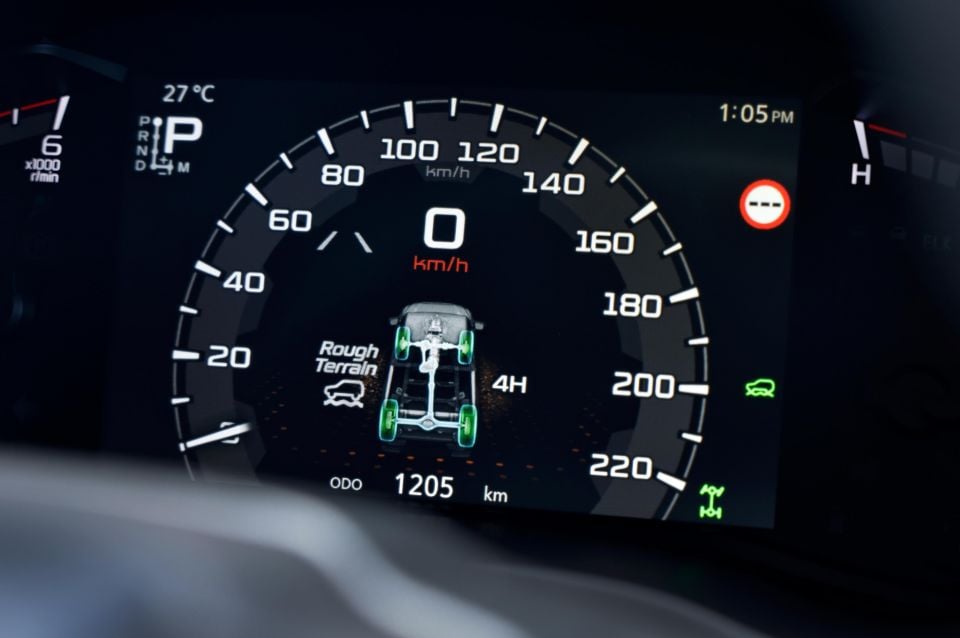
The BT-50 also utilises the climate control panel from the D-Max, which consists of a straightforward row of toggle switches attached to a thin digital display – nice and tactile, which is perfect for making adjustments on the move.
That’s generally the case with this interior, although I wasn’t so fond of the unseparated steering wheel buttons.
And while the cabin is a pleasant place to spend your time, it’s not the most practical in the segment. All the main interior storage spaces are smaller than you might hope for, and there’s no wireless phone charging pad to be found.
Instead, you’ll find a pair of USB-C outlets under the centre stack, plus a 12-volt power outlet. There’s another USB outlet located near the rear-view mirror, suitable for dash cameras.
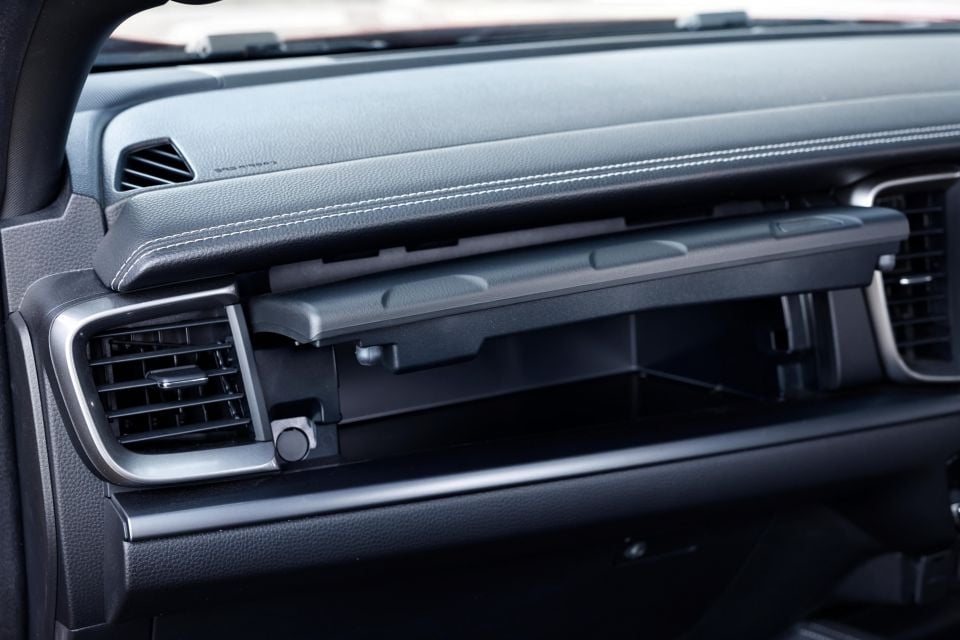
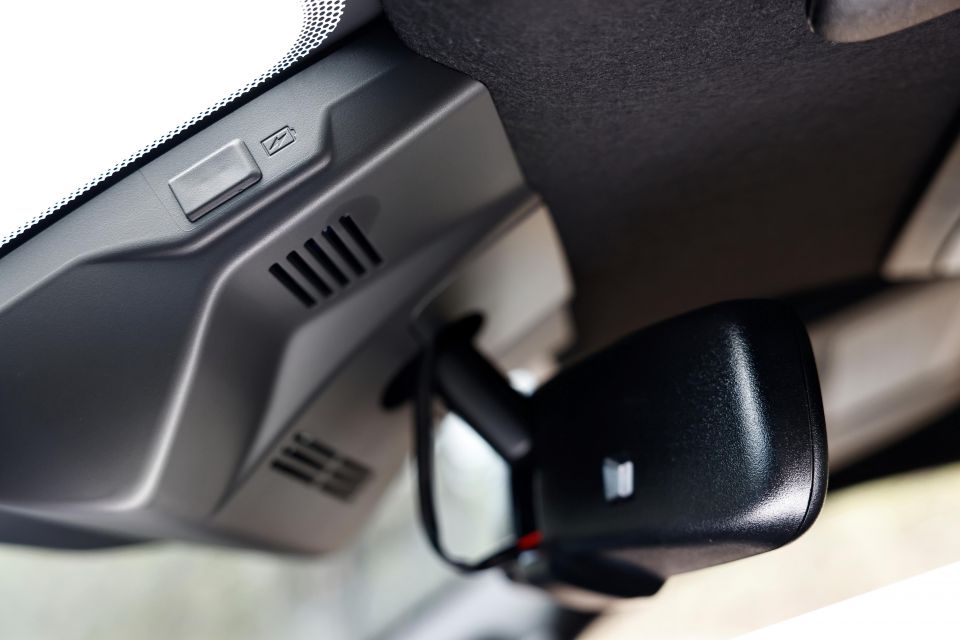
The cupholders are comfortably large enough for an XL takeaway coffee, and more valuable items can be stored in a ‘hidden’ compartment above the glovebox.
From a practicality standpoint, the second row is a completely different proposition.
Legroom and headroom are impressive for the segment, and the middle seat is entirely usable. Dark roof lining may contribute to claustrophobia for taller adults, but that’s not a dealbreaker.
The rear bench benefits from generous padding and the same quality materials that you find up front, both of which make it comfortable.
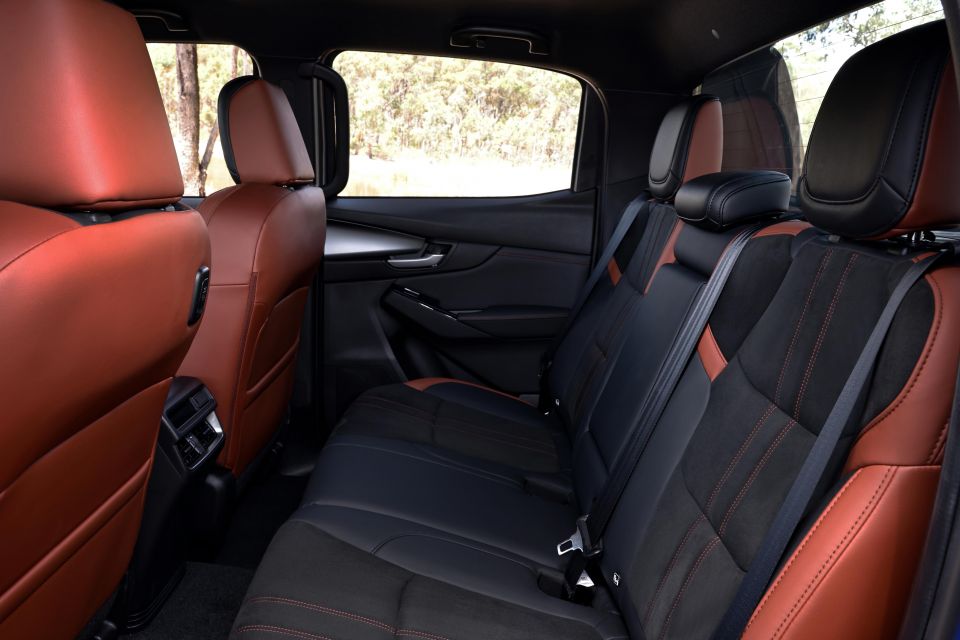
Above: SP shown
Rear amenities include dual air vents, bottle-shaped door bins, wide map pockets on the seat backs, and a centre armrest with integrated cupholders. A single USB-C outlet also features… surely there’s room for two to prevent arguments between tech-obsessed teenagers and tradies.
Space is also ample in the tub, which stretches back the furthest of any mainstream mid-sized dual-cab at 1571mm in length.
The packaging is also excellent – the wheel arches take up too much space, while the addition of hydraulic struts makes light work of operating the tailgate and allows for soft opening.
The GT features a neatly lined tub as well as a standard tow bar, although it misses out on a manual roller tonneau cover and sports bar, both of which are only standard for the flagship SP.
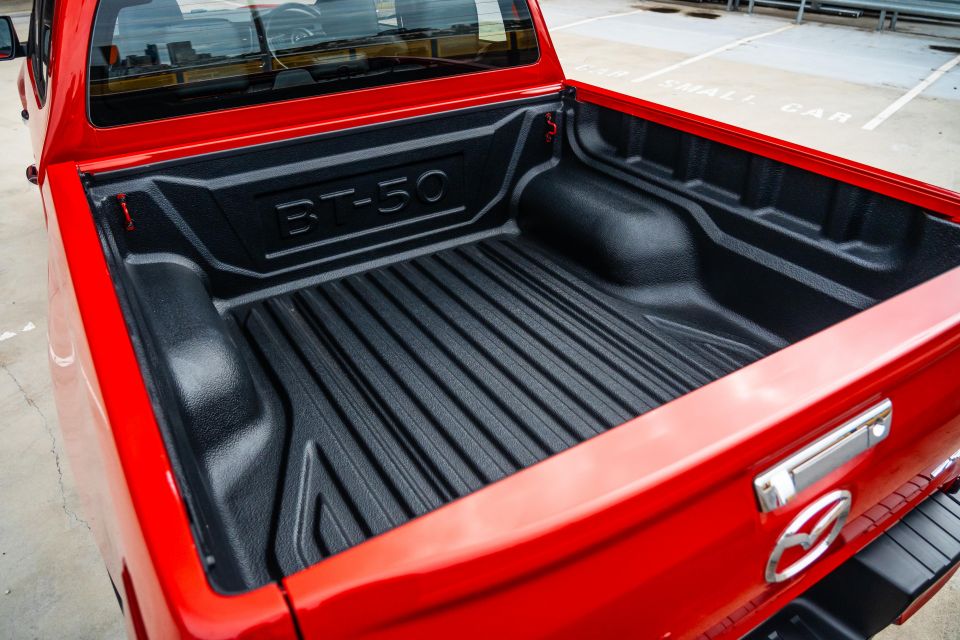
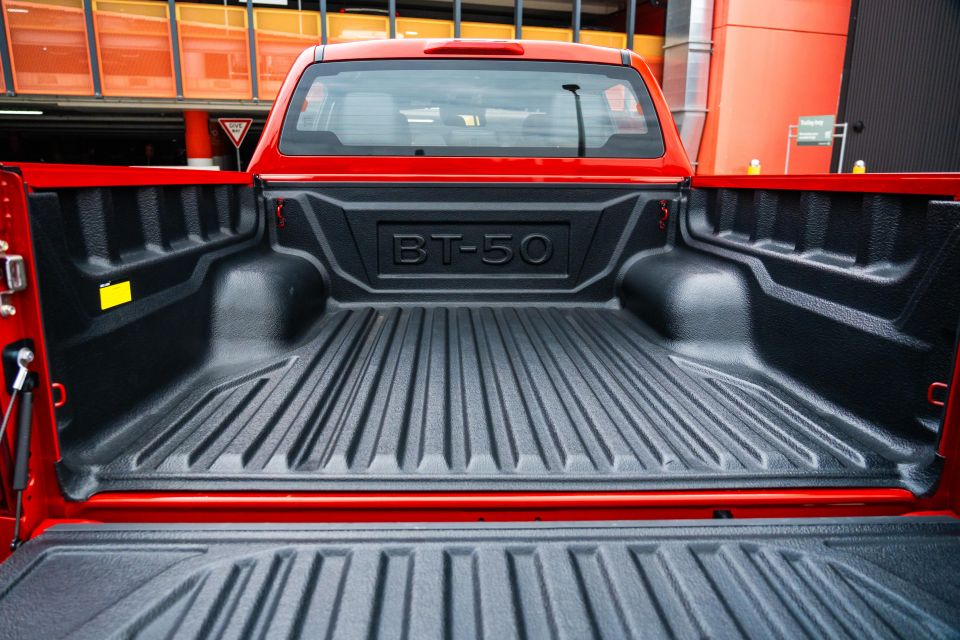
| Mazda BT-50 GT | |
|---|---|
| Length | 5280mm |
| Width | 1870mm |
| Height | 1790mm |
| Wheelbase | 3125mm |
| Tub length | 1571mm |
| Tub width | 1530mm (maximum), 1120mm (between wheel arches) |
| Tub depth | 490mm |
To see how the Mazda BT-50 stacks up against its rivals, use our comparison tool
There are two four-cylinder turbo-diesel engines available across the BT-50 range, and they’re the same ones seen in the D-Max and MU-X. Fitted only to the base XS 4×2 is the 1.9-litre engine, while all other variants come standard with Isuzu’s trusty 3.0-litre turbo-diesel.
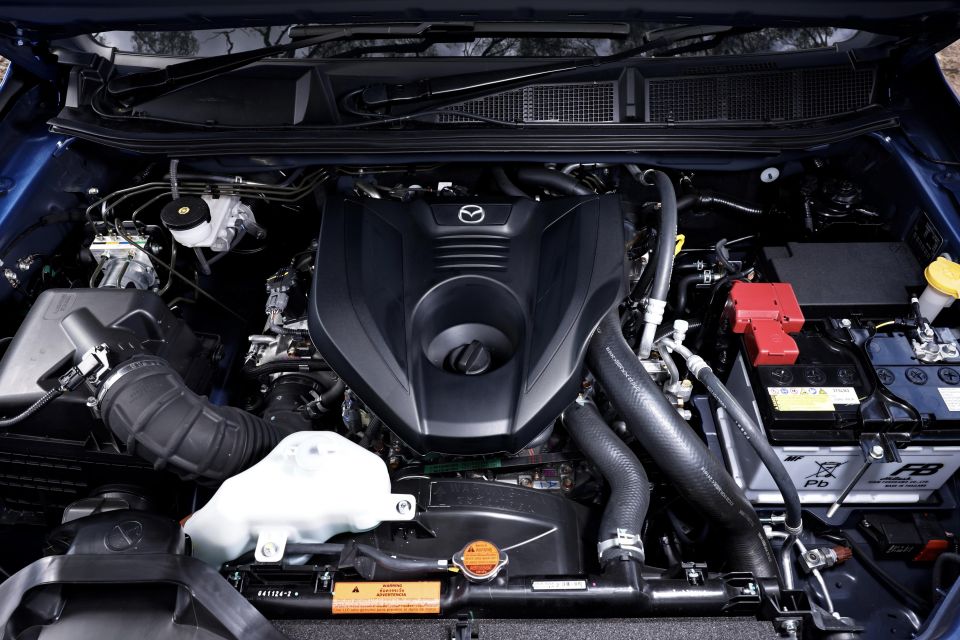
| Specifications | Mazda BT-50 GT |
|---|---|
| Engine | 3.0L 4cyl turbo-diesel |
| Power | 140kW |
| Torque | 450Nm |
| Transmission | 6-speed automatic |
| Drive type | Four-wheel drive |
| Fuel economy (claimed) | 8.0L/100km |
| Fuel economy (as tested) | 9.5L/100km |
| CO2 emissions (claimed) | 207g/km |
| Fuel tank | 76 litres |
| Weight | 2102kg |
| Payload | 998kg |
| Braked towing capacity | 3500kg |
| Gross vehicle mass (GVM) | 3100kg |
| Gross combination mass (GCM) | 6000kg |
The Isuzu D-Max and MU-X will become available with the Japanese brand’s new 2.2-litre four-cylinder turbo-diesel from the fourth quarter of this year.
And we expect the new engine, which is claimed to consume about 10 per cent less fuel than the 1.9-litre engine it replaces, will soon also power entry-level versions of the D-Max’s twin, the Mazda BT-50.
To see how the Mazda BT-50 stacks up against its rivals, use our comparison tool
The mechanicals of this BT-50 may be tried and true, but I was ultimately left wanting more.
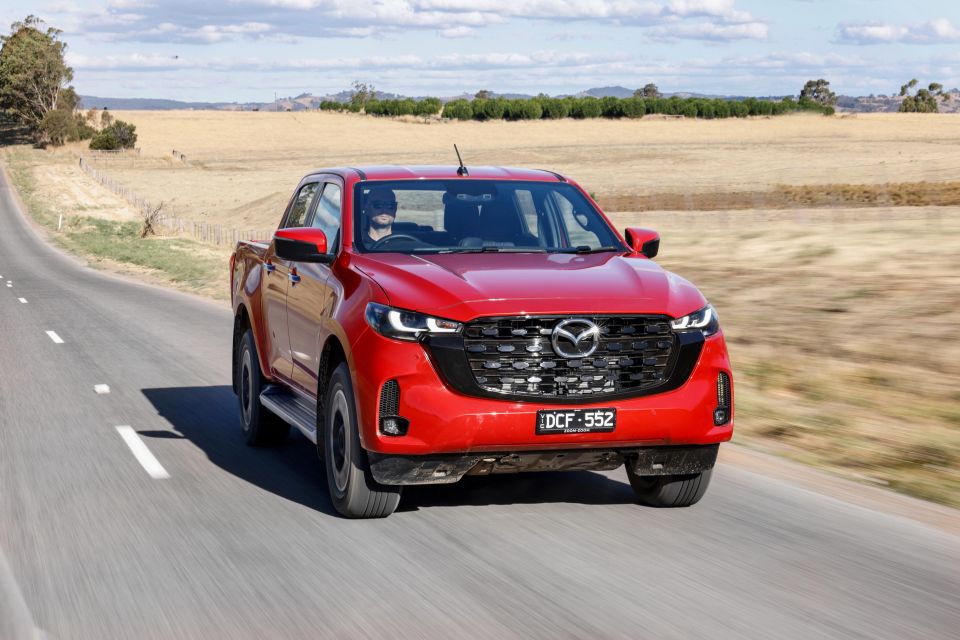
The BT-50 and D-Max share a 3.0-litre four-cylinder turbo-diesel engine that produces 140kW of power and 450Nm of torque, mated to a 6-speed automatic transmission and four-wheel drive.
It’s a noisy lump on startup, bursting to life with a clatter that never really goes away. Shift into drive and the BT-50 gets rolling without too much fuss, but it’s clearly down on torque compared to rivals.
The four-cylinder Ford Ranger is certainly more willing, while the V6 is in another league. And that’s before you consider of the new wave of plug-in hybrid utes, all of which are brimming with battery-powered punch.
Because the BT-50 feels a little sluggish, you’re forced to work it harder, and with that comes unwelcome noise and vibration.
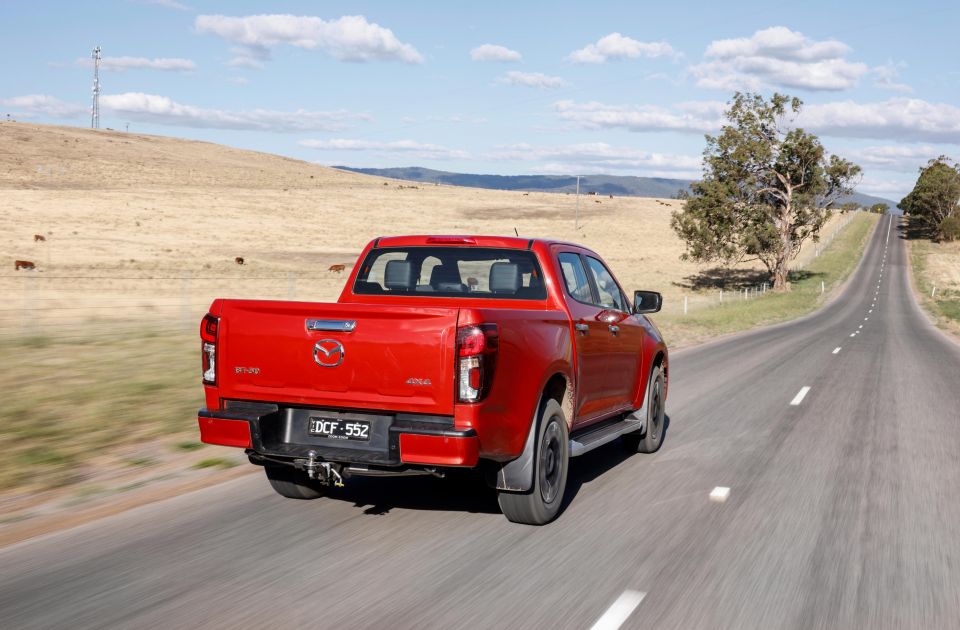
Noise, vibration and harshness (NVH) levels also suffer from a busy suspension setup that makes the BT-50 feel jittery around town. Our tester wasn’t at all forgiving when exposed to coarse surfaces or speed humps, and the rear end only feels settled when you load up the tub.
Whether it be laden or unladen, the BT-50 is at the very least easy to steer in urban scenarios. The steering itself is light and accurate, there’s plenty of outward visibility, and the vehicle feels suitably manoeuvrable.
When in doubt, you’ve got access to a full-screen reversing camera with overlaid guidelines, as well as front and rear parking sensors.
Out on the highway, the BT-50 is plagued by some of the same issues I’ve already mentioned, while new flaws also come to light.
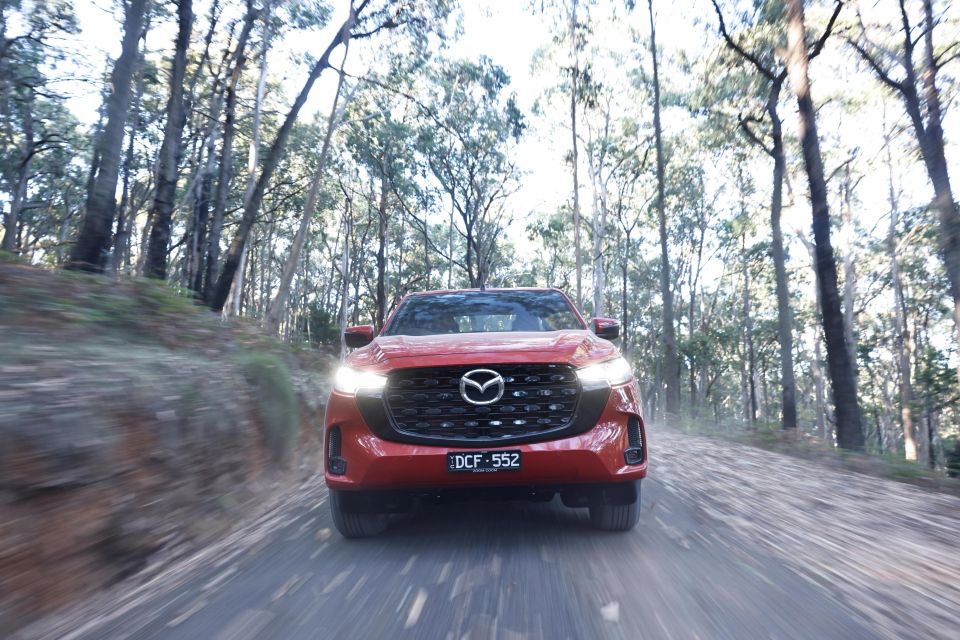
This 3.0-litre variant can keep up with traffic at triple-figure speeds, but it lacks grunt when overtaking.
The general experience is quite loud and unrefined – wind noise is amplified by a pair of large side mirrors, and the engine is always audible.
There’s the option to engage adaptive cruise control and let the computers do all the work, but that comes with its own set of compromises.
For one, the system is slow perceive changes in traffic flow, often leading to situations where the driver is forced to intervene as the BT-50 hurtles towards a leading car. The lane-centring function isn’t particularly effective, either.
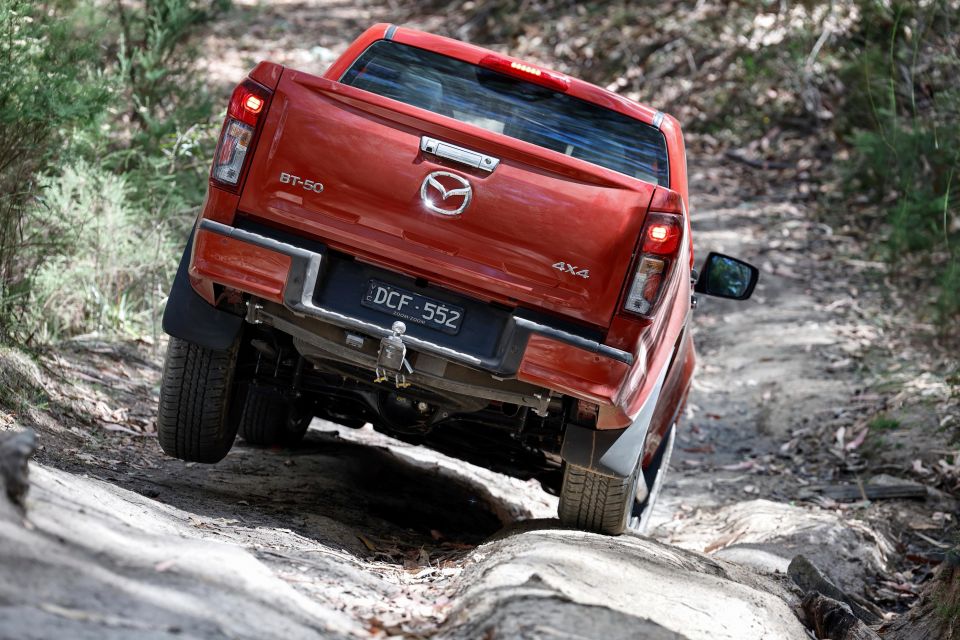
Where expert car reviews meet expert car buying – CarExpert gives you trusted advice, personalised service and real savings on your next new car.
Mazda generally does a good job of calibrating its advanced driver assist systems (ADAS) for the real world, but the BT-50 stands out as an exception. In addition to highway cruising complaints, I found the front proximity sensors to be hyper-sensitive in city traffic, although there’s a handy button to mute those warnings.
While I was left a little disappointed by the BT-50 in the cut and thrust of urban life, its off-road prowess is well documented.
The turbo-diesel engine doesn’t feel quite as under-gunned on the trails, and it’s easy to place the BT-50 given its manageable dimensions.
The addition of Rough Terrain Mode allows the BT-50 to traverse difficult and uneven terrain with greater ease by increasing low-speed traction and reducing the reliance on the differential lock, while all 4×4 variants now feature a rear diff lock as standard.
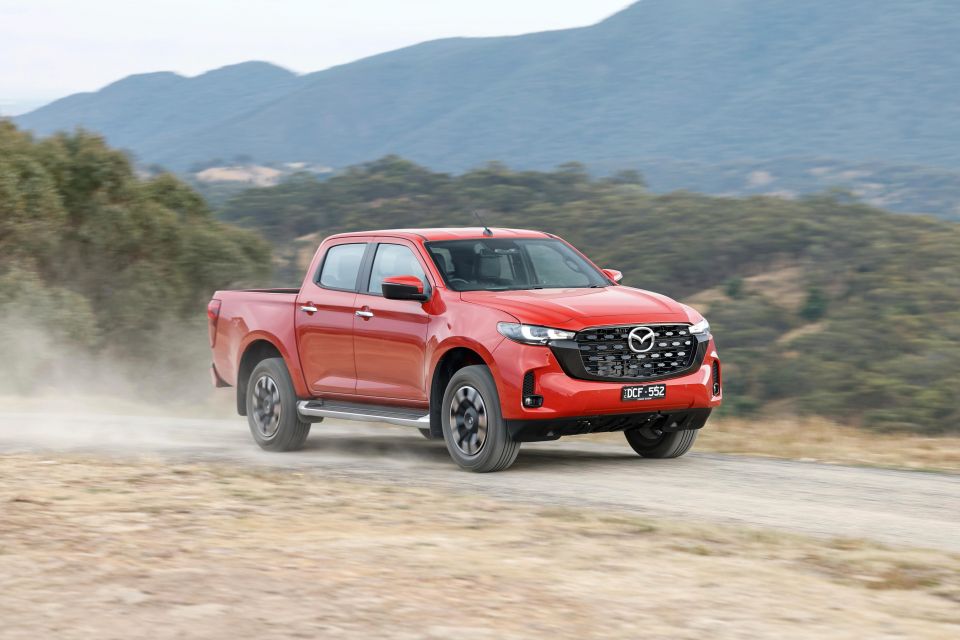
These new inclusions complement a range of drive modes include low-range 4WD, high-range two-wheel drive (2H) and four-wheel drive (4H). However, There’s no automatic 4H mode as in top-spec Rangers.
The BT-50 also benefits from an off-road friendly approach angle and decent ground clearance.
All that’s left is to throw on a set of all-terrain tyres on and you’ve got yourself a capable adventure vehicle.
| Off-road dimensions | Mazda BT-50 GT |
|---|---|
| Track front and rear | 1570mm |
| Ground clearance | 240mm |
| Approach angle | 30.4 degrees |
| Departure angle | 17.9 degrees |
| Ramp breakover angle | 23.8 degrees |
| Wading depth | 800mm |
To see how the Mazda BT-50 stacks up against its rivals, use our comparison tool
On top of a long list of standard equipment, the GT brings leather seat trim, heated front seats with power adjustment, heated mirrors, and remote engine start functionality.
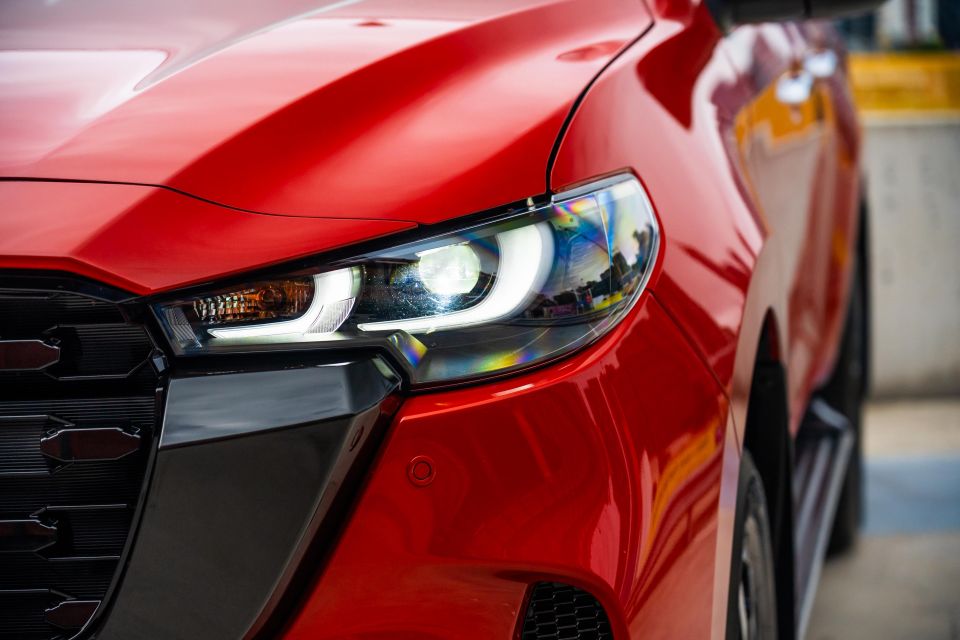
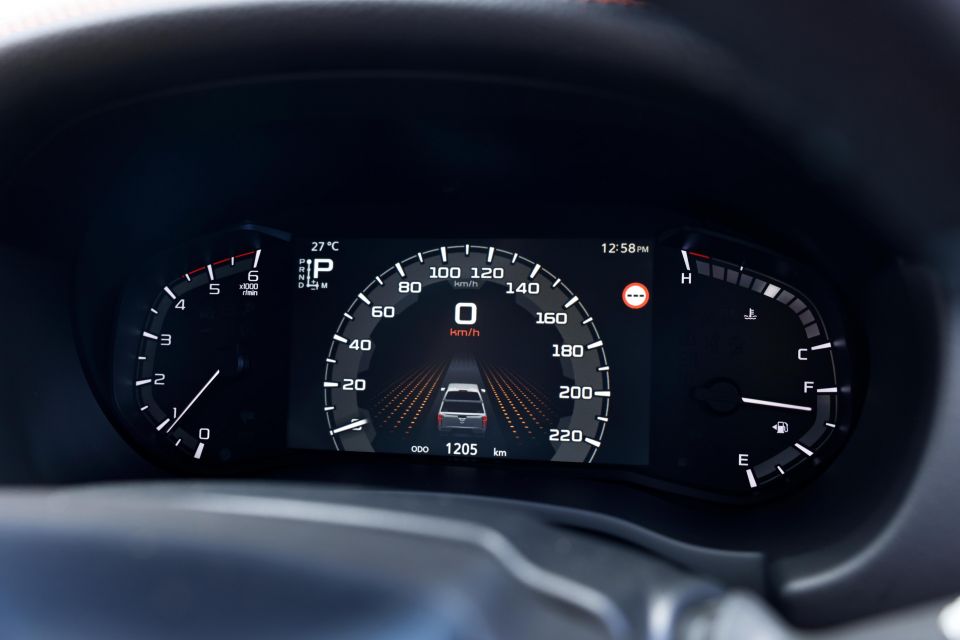
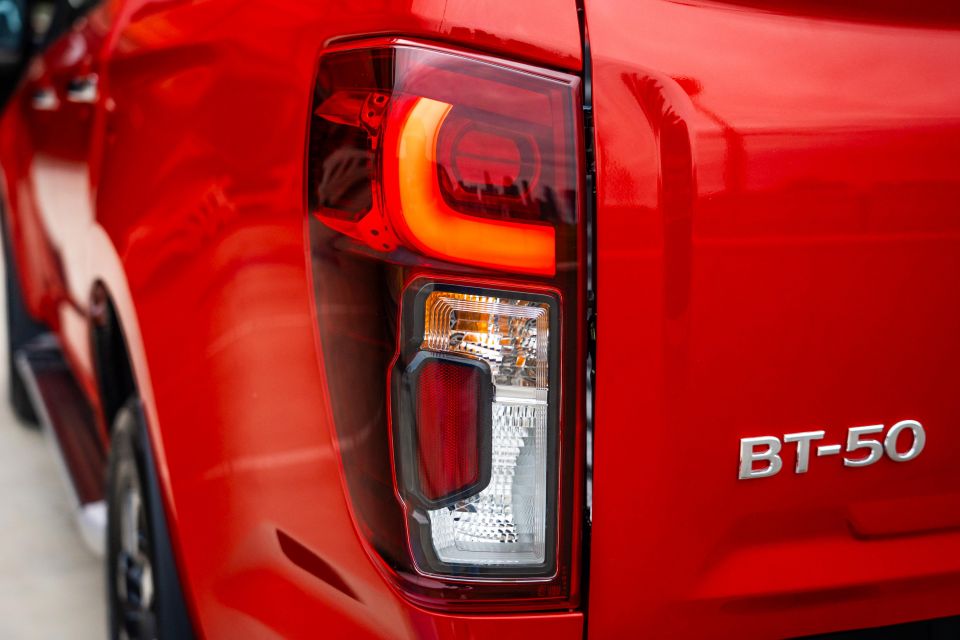
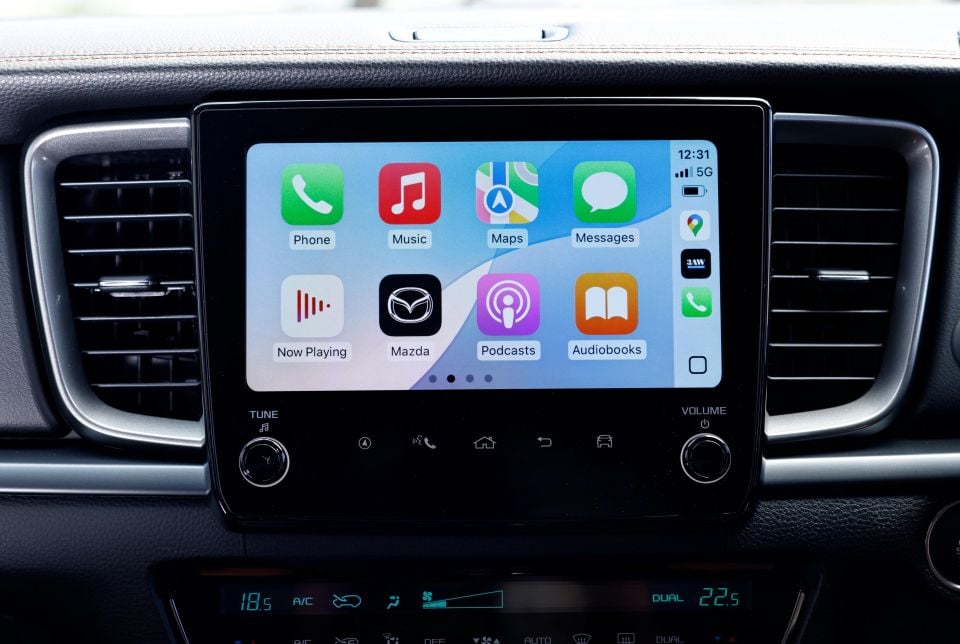
2025 Mazda BT-50 XS equipment highlights:
BT-50 XT adds:
BT-50 XTR gains:
BT-50 GT adds:
BT-50 SP gains:
Additionally, there are more than 100 genuine Mazda accessories available for the BT-50, so it’s worth visiting a Mazda dealer to check out and the customisation options.
They’re also covered by the ute’s five-year factory warranty if fitted at delivery, or a two-year warranty if fitted after purchase.
To see how the Mazda BT-50 stacks up against its rivals, use our comparison tool
The Mazda BT-50 was awarded a five-star ANCAP safety rating in 2022, based on tests conducted on the Isuzu D-Max.

| Assessment category | Score |
|---|---|
| Adult occupant protection | 86 per cent |
| Child occupant protection | 89 per cent |
| Vulnerable road user protection | 67 per cent |
| Safety assist | 84 per cent |
The utes were reassessed despite having already received five-star ratings in 2020, as the D-Max and BT-50 received a design change to the driver’s knee airbag and instrument panel.
Standard safety equipment includes:
To see how the Mazda BT-50 stacks up against its rivals, use our comparison tool
The Mazda BT-50 is covered by the Japanese brand’s five-year, unlimited-kilometre warranty, which includes roadside assistance for the same period.
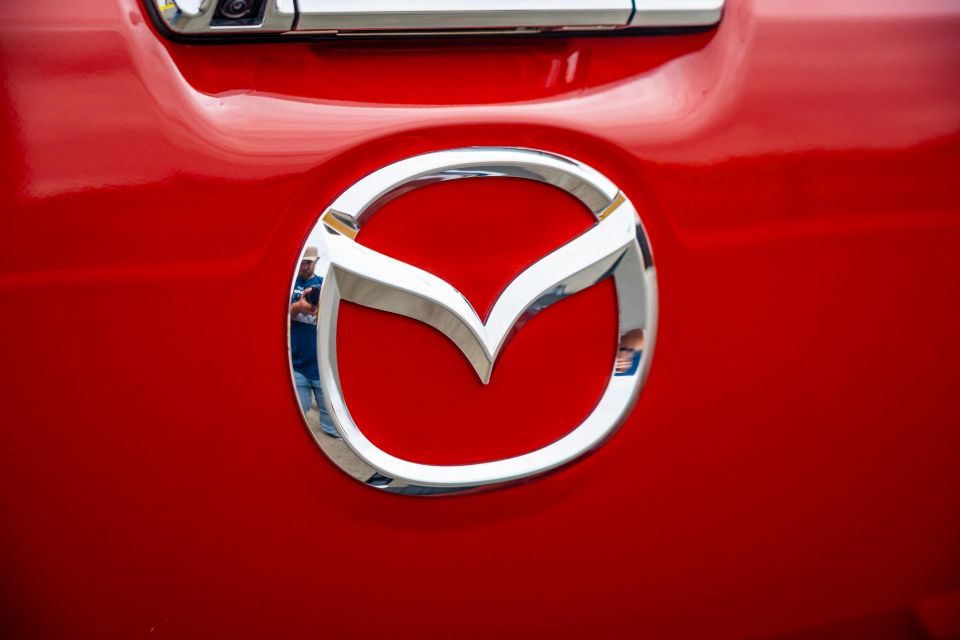
| Servicing and Warranty | Mazda BT-50 GT |
|---|---|
| Warranty | 5 years, unlimited kilometres |
| Roadside assistance | 5 years, unlimited kilometres |
| Service intervals | 12 months, 15,000km |
| Capped-price servicing | 5 years |
| Average annual capped-price service cost | $499.20 |
| Total capped-price service cost | $2496 |
Service pricing is capped for five years, with the annual average working out to around $500/year. That’s more than you’ll pay to service a Ford Ranger or Isuzu D-Max, but more affordable than the service programs offered for the Kia Tasman and Toyota HiLux.
With that said, Kia’s offering covers seven years of servicing.
To see how the Mazda BT-50 stacks up against its rivals, use our comparison tool
Writing about the pre-update BT-50 in November last year, I expressed optimism for this facelift and what it could do for the model. Having now driven a high-spec example, I must say I’m a little underwhelmed.

I didn’t mind the looks of the old BT-50, so tweaks to the design wouldn’t be a massive selling point for me. This is of course, subjective.
However, the safety technology definitely feels more intrusive than before, which sours the driving experience. And the engine remains merely adequate, even more so now when you consider the rise of plug-in hybrid (PHEV) utes.
The standard suspension setup leaves plenty of room for improvement, too.
On a more positive note, there’s still plenty to like about the interior of the BT-50. The cabin is spacious and trimmed in quality materials, while the new infotainment system is a step forward, albeit not a giant leap over the old tech.
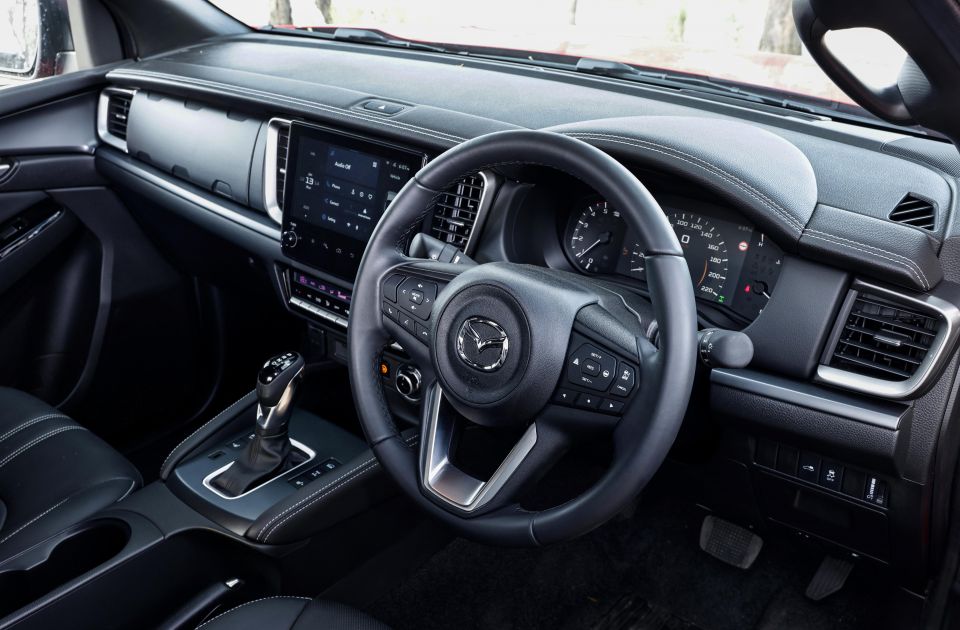
And the BT-50 is now better equipped to venture off the blacktop – a key consideration for adventurous buyers.
However, on balance, I just don’t think the BT-50 GT is a top pick of the ute bunch. The brand-new Kia Tasman hits many of the same beats just a little better than the Mazda, assuming you can stomach its divisive styling.
For GT money you can also get behind the wheel of a Ranger Sport bi-turbo, which promises superior on-road refinement.
And if serious off-roading isn’t on your radar, the BYD Shark 6 has rocketed up the sales charts for a reason – it’s an accomplished lifestyle ute that still represents great value for money.
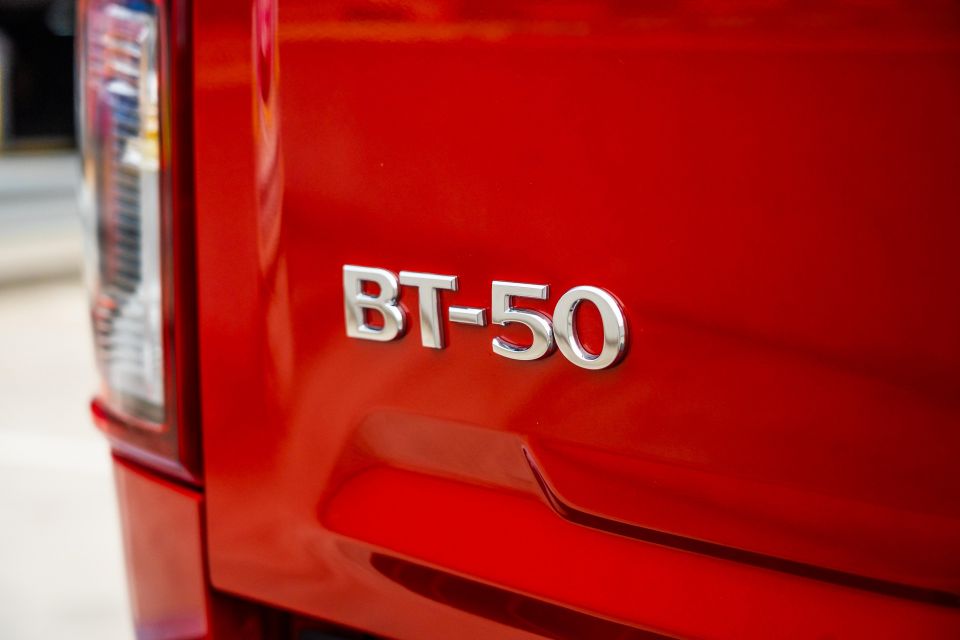
CarExpert can save you thousands on a new Mazda BT-50. Click here to get a great deal
Click the images for the full gallery
Where expert car reviews meet expert car buying – CarExpert gives you trusted advice, personalised service and real savings on your next new car.
Josh Nevett is an automotive journalist based in Melbourne, Australia. Josh studied journalism at The University of Melbourne and has a passion for performance cars, especially those of the 2000s. Away from the office you will either find him on the cricket field or at the MCG cheering on his beloved Melbourne Demons.


Josh Nevett
27 Days Ago


Paul Maric
27 Days Ago
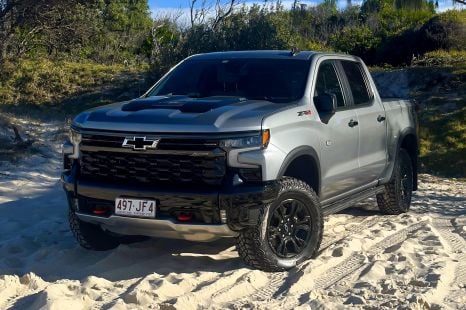

William Stopford
26 Days Ago
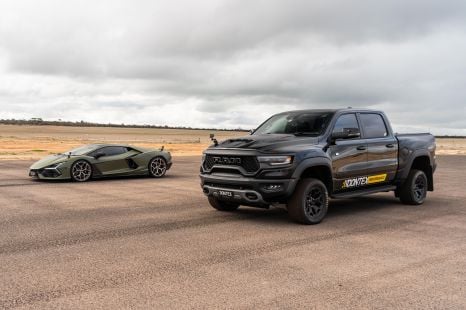

Paul Maric
14 Days Ago
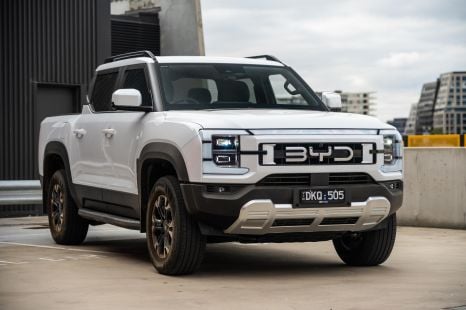

Max Davies
8 Days Ago
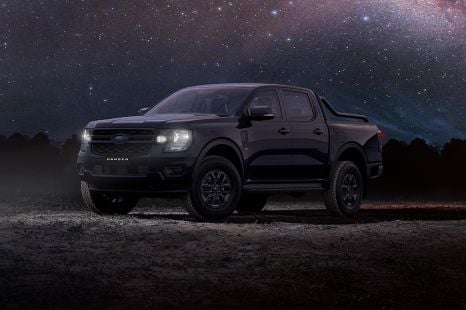

Damion Smy
7 Days Ago